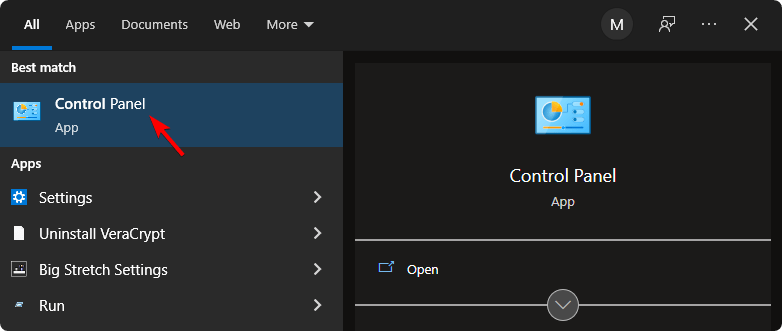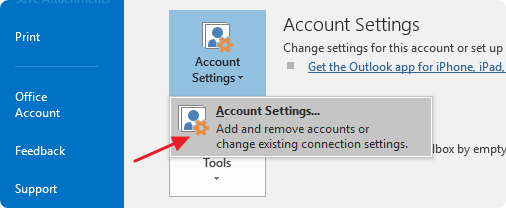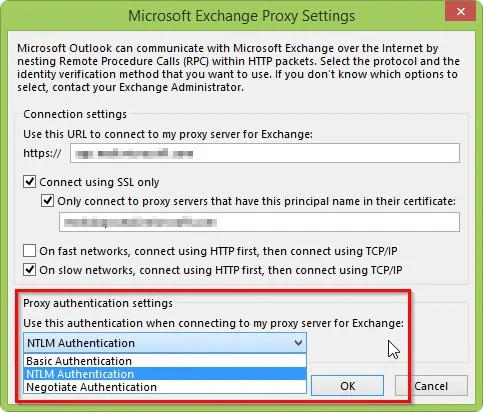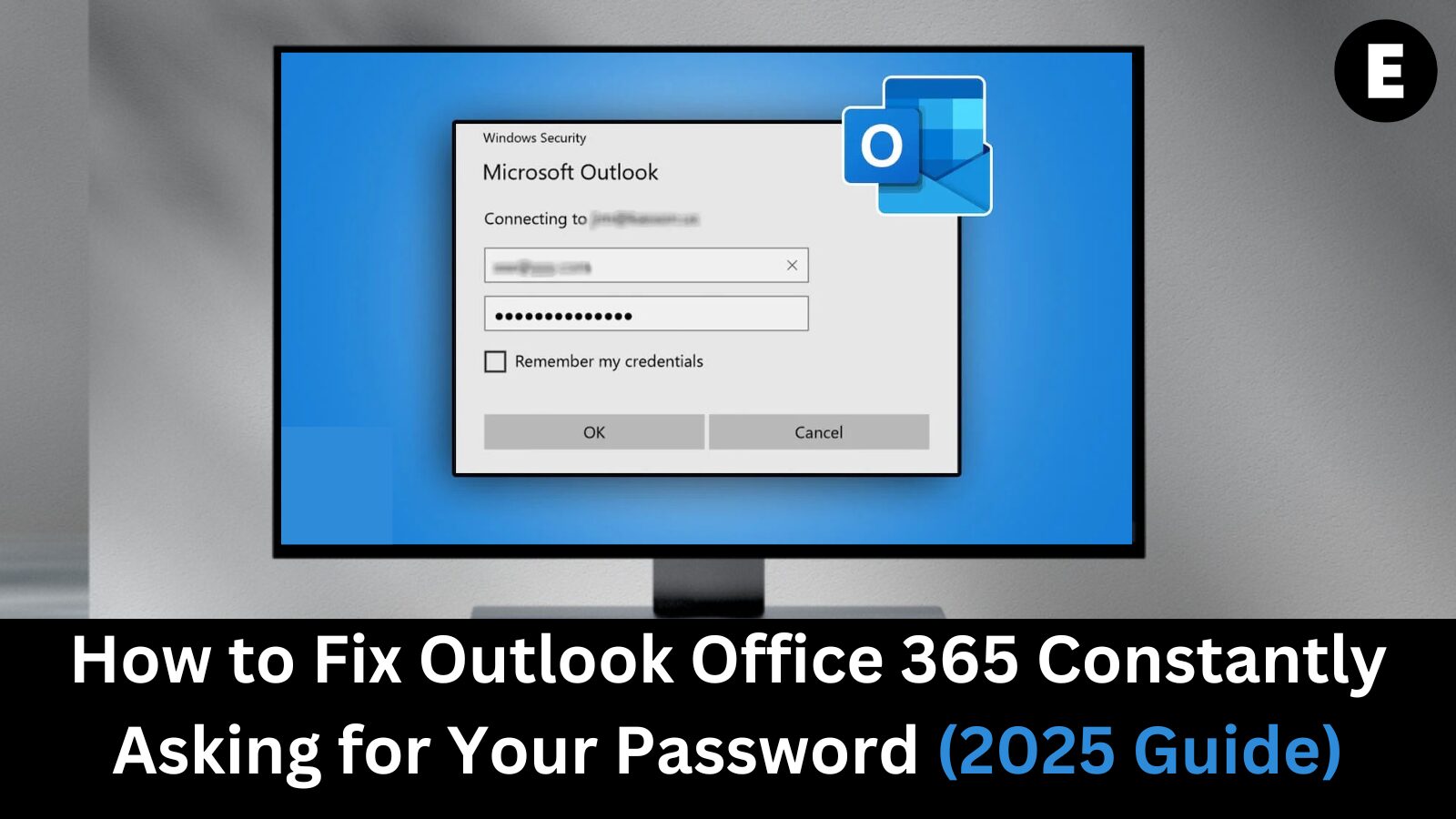If Outlook Office 365 keeps asking for your password every time you open the app, you’re not alone. This recurring issue is a common frustration for many users and can seriously impact your workflow and productivity. Whether you’re using Outlook for work or personal email, constant password prompts can disrupt your day and make email access a hassle. Fortunately, there are proven solutions to stop Outlook from repeatedly asking for your credentials.
Microsoft Outlook is a widely used email client within Office 365, trusted by businesses and individuals worldwide for its reliability and advanced features. However, when Outlook keeps prompting for a password—even after entering it correctly—it usually points to issues like incorrect settings, outdated credentials, corrupted profiles, or problems with modern authentication.
In this comprehensive troubleshooting guide, we’ll walk you through the most common reasons behind Outlook’s repeated password prompts and offer step-by-step solutions to fix them. From clearing stored credentials and updating your Office 365 settings to checking for software updates and enabling modern authentication, we’ve got you covered. Say goodbye to login interruptions and hello to seamless access to your emails.
By the end of this guide, you’ll understand exactly why this issue happens and how to resolve it for good—restoring your Outlook experience to what it should be: secure, efficient, and hassle-free.
Why Does Outlook Keep Asking for My Password? (Explained)
If you’re wondering, “Why does Outlook keep asking for my password even after I’ve entered it correctly?”—you’re not alone. This recurring issue typically indicates a problem with how Outlook handles the authentication process with your email server. Whether you’re using Office 365, Microsoft Exchange, or another email provider, understanding the root cause is the first step toward a reliable fix.
One of the most common reasons Outlook keeps prompting for a password is due to misconfigured authentication settings. Specifically, the Logon Network Security setting in Outlook plays a critical role in how the email client connects and authenticates with the Exchange server. If this setting is configured to anything other than “Anonymous Authentication”, such as NTLM or Kerberos, Outlook may continuously request your login credentials—even if you’re entering the correct password.
Other potential culprits include outdated cached credentials, corrupted Outlook profiles, or missing updates in your Office 365 installation. Each of these factors can interfere with the secure communication between Outlook and your mail server.
To resolve this issue effectively, it’s essential to check and adjust your Outlook security settings, ensure your Office apps are up to date, and clear any outdated credentials stored in Windows Credential Manager. By tackling these root causes, you can prevent Outlook from repeatedly asking for your password and restore smooth, uninterrupted access to your emails.
How to Fix Outlook Office 365 Keeps Asking for Password (Step-by-Step Solutions)
If Outlook Office 365 keeps asking for your password, even after you’ve entered it correctly, don’t worry—there are effective solutions available. This issue is typically caused by authentication errors, outdated credentials, or configuration problems within the Outlook client or your Microsoft 365 account. Below, we’ll walk you through one of the most reliable first steps to resolve it.
✅ 1. Run the Microsoft 365 Self-Diagnostics Tool
One of the easiest and most effective ways to fix the Outlook password prompt issue is by using Microsoft’s official Self-Diagnostics Tool. This tool is specifically designed for Microsoft 365 users who are experiencing repeated password prompts in Outlook. It scans your system for known problems and automatically suggests fixes based on what it finds.
To get started, visit the Microsoft Support page and click on the link labeled “Diag: Outlook keeps asking for my password” to download the diagnostic tool. Once downloaded:
- Launch the tool on your computer.
- Follow the on-screen prompts to begin the diagnostic process.
- Allow the tool to run a full scan of your Outlook configuration and sign-in settings.
After the scan completes, you’ll receive a detailed report highlighting any issues found and potential resolutions. This report is extremely helpful for both automatic and manual troubleshooting, especially if you’re experiencing persistent login problems with Outlook Office 365.
Using this tool is often the quickest way to resolve common Outlook authentication issues and restore seamless access to your email account—without needing advanced technical skills.
✅ 2. Check Your Credential Settings in Outlook
Another common reason Outlook Office 365 keeps asking for your password—especially if you’re using an Exchange account—is due to a misconfigured credential setting within your Outlook profile. If the “Always prompt for logon credentials” option is enabled, Outlook will request your password every time you try to connect, regardless of your authentication method.
Disabling this setting can help eliminate the constant password prompts and streamline your sign-in experience. Here’s how to do it:
🔧 Step-by-Step: Disable “Always Prompt for Logon Credentials” in Outlook
- Open Outlook (Office 365 or Outlook 2021) and click on the “File” tab in the top-left corner.
- Select “Info,” then click on “Account Settings” and again on “Account Settings…” from the dropdown.
- In the Account Settings window, select your Microsoft Exchange account and click “Change.”
- Click the “More Settings” button to access advanced configuration options.
- Navigate to the “Security” tab.
- Under “User Identification,” make sure the checkbox for “Always prompt for logon credentials” is unchecked.
- Click OK, then Next, and finally Finish to apply the changes.
Disabling this setting allows Outlook to use your saved credentials securely, helping you avoid unnecessary password prompts every time you launch the app or check your email.
By managing your credential settings correctly, you can ensure a smoother, more efficient Outlook login experience—especially important for those using Microsoft Exchange or Office 365 in a business environment.
✅ 3. Disconnect Your Microsoft Account from Office Apps
If Outlook Office 365 keeps asking for your password, it may be due to your Microsoft account being linked to multiple Office apps on your system. In some cases, these cross-app connections can cause credential conflicts that trigger repeated password prompts in Outlook. Disconnecting your account from unused or unnecessary apps can help isolate and resolve the issue.
🔧 Step-by-Step: How to Disconnect Your Microsoft Account from Office Apps
Follow these instructions to remove your Microsoft account from other connected apps:
- Press Windows Key + I to open the Settings app quickly, or navigate to it from the Start Menu.
- In the Settings window, click on “Accounts.”
- From the left-hand sidebar, select “Email & accounts.”
- Scroll down to the section titled “Accounts used for other apps.”
- Locate your email address in the list. Once found, click on it to highlight it.
- Click the “Remove” or “Disconnect” option to unlink the account from other Office applications.
After disconnecting your Microsoft account, restart Outlook and monitor whether the password prompts persist. If the issue was caused by account conflicts or redundant authentication checks, this step often clears up the problem effectively.
By managing the accounts linked to your Office environment, you can reduce potential authentication errors and ensure Outlook runs smoothly without constant interruptions.
✅ 4. Reset Your Outlook Login Settings via Windows Credential Manager
Another effective way to fix the Outlook Office 365 password prompt issue is by resetting your saved login credentials through the Windows Credential Manager. Over time, outdated or corrupted login entries can cause Outlook to repeatedly request your password—even if it’s correct. Clearing these stored credentials can help Outlook authenticate properly and restore normal functionality.
🔧 Step-by-Step: How to Clear Outlook Credentials in Windows
Follow these steps to reset your Outlook login settings:
- Press Windows Key + S to bring up the search bar.
- Type “Credential Manager” into the search field and select it from the results.
- In the Credential Manager window, click on “Windows Credentials.”
- Look for any saved credentials that are related to Office 365, Microsoft Outlook, or your email account.
- Click on each related credential to expand it, then select “Remove”.
- A confirmation dialog will appear—click “Yes” to permanently delete the credential.
- Repeat this process until all Outlook or Office 365-related credentials are removed.
Once complete, restart Outlook. The app will prompt you to enter your login details again. This time, it should save your credentials properly and stop asking for your password repeatedly.
Clearing old or incorrect saved credentials is a safe and simple fix that often resolves persistent authentication issues in Microsoft Outlook—especially when paired with other troubleshooting steps.
✅ 5. Clear Cached Passwords in Outlook to Stop Repeated Prompts
Outlook Office 365 stores cached passwords to streamline the login process, allowing users to access their email accounts without repeatedly entering their credentials. However, if these cached credentials become outdated or corrupted, Outlook may continuously prompt you for a password—even if it’s correct. Clearing these stored passwords can resolve the issue and restore seamless sign-in functionality.
🔧 Step-by-Step: How to Clear Cached Outlook Passwords
Follow these steps to remove cached passwords from your system:
- Press Windows Key + S to open the search bar.
- Type “Control Panel” into the search field and click on the matching result.

- Once the Control Panel opens, set the “View by” option to “Category.”
- Click on “User Accounts,” then select “Credential Manager.”

- In the Credential Manager window, go to the “Windows Credentials” section.
- Look for entries that contain “Outlook” in their names.
- Click on each relevant credential to expand the details.
- Select “Remove from Vault” to delete the cached password.
- Repeat the process for any other Outlook-related entries listed.
Once you’ve removed all outdated or conflicting credentials, restart Outlook and re-enter your login information when prompted. This fresh login should now be properly cached, helping prevent further password prompts.
Clearing cached passwords is a simple but highly effective fix for recurring login issues in Outlook. It’s especially helpful after account changes, Office 365 migrations, or system updates that might disrupt saved credentials.
✅ 6. Enable the “Remember Password” Option in Outlook
One often-overlooked reason Outlook Office 365 keeps asking for your password is that the “Remember Password” feature may be disabled. This setting allows Outlook to securely store your login credentials, so you don’t have to re-enter them every time you open the application. If it’s unchecked, Outlook won’t retain your password—leading to constant prompts.
🔧 Step-by-Step: How to Enable “Remember Password” in Outlook
Here’s how to ensure this feature is enabled:
- Launch Outlook, then click the “File” tab at the top-left corner.
- From the dropdown menu, select “Account Settings,” then click “Account Settings…” again.
- In the new window, navigate to the “Email” tab.
- Double-click on the email account that’s giving you trouble.
- A new settings window will open. Locate and check the box labeled “Remember password.”

6. Click Next, then Finish, and finally Restart Outlook to apply the changes.
Once enabled, Outlook will save your login credentials and use them for future logins—eliminating the need to enter your password repeatedly.
Enabling this simple yet powerful setting can significantly improve your Outlook experience, particularly if you’re using a personal or non-corporate email setup where security policies allow for stored credentials.
✅ 7. Configure Outlook Anywhere to Use NTLM Authentication
If you’re accessing your Exchange account outside your organization’s firewall, Outlook Anywhere is the feature that allows secure remote connectivity. However, choosing the wrong authentication method can lead to repeated password prompts. Switching to NTLM Authentication can significantly reduce these prompts and streamline your login process.
🔧 Step-by-Step: Set Up Outlook Anywhere with NTLM Authentication
Follow the instructions below to configure Outlook Anywhere properly:
- Open Microsoft Outlook on your device.
- Click the “File” tab at the top of the window, then select “Account Settings” > “Account Settings…”

- In the Account Settings window, select your Exchange account and click “Change.”
- In the Change Account wizard, click “More Settings.”

- Navigate to the “Connection” tab.
- Click the “Exchange Proxy Settings…” button.
- In the new window, find the “Proxy authentication settings” section.
- From the dropdown menu, select “NTLM Authentication.”

- Click “OK” to apply the changes, then close out of all remaining windows by clicking Next, then Finish.
After applying these settings, restart Outlook and test your Exchange connection. Using NTLM Authentication helps Outlook remember your login credentials more efficiently, especially when working remotely, and often eliminates persistent password requests.
Properly configuring Outlook Anywhere with NTLM Authentication is a best practice for anyone accessing their Exchange server off-network. It boosts both security and convenience, making for a much smoother email experience.
Conclusion
Outlook is a vital tool for managing multiple email accounts, but it can be incredibly frustrating when it repeatedly asks for your password, even though you’ve entered the correct credentials. Fortunately, as we’ve explored, there are several straightforward solutions to fix this issue and restore smooth functionality to your Outlook experience.
By following the steps outlined above, you should be able to pinpoint and resolve the underlying cause of the persistent password prompts in Outlook. Whether it’s adjusting settings, clearing cached credentials, or configuring authentication options, these tips can help eliminate interruptions and get you back to managing your emails without hassle.
We hope this guide has been helpful in troubleshooting and resolving the password prompt issue. If you have any further questions or need additional assistance, feel free to reach out to us for support. Happy emailing!
One more thing
If you’re in search of a software company that embodies integrity and upholds honest business practices, your quest ends here at Ecomkeys.com. As a Microsoft Certified Partner, we prioritize the trust and satisfaction of our customers. Our commitment to delivering reliable software products is unwavering, and our dedication to your experience extends far beyond the point of sale. At Ecomkeys.com, we provide a comprehensive 360-degree support system that accompanies you throughout your software journey. Your trust is our foundation, and we’re here to ensure that every interaction with us is a positive and trustworthy one.
Related Articles
- Fixed: Microsoft Office Is Taking Too Long to Install
- Troubleshooting Microsoft Office Installation 🛠️
- How to Fix Windows 11 Crashes: A Complete Troubleshooting Guide

